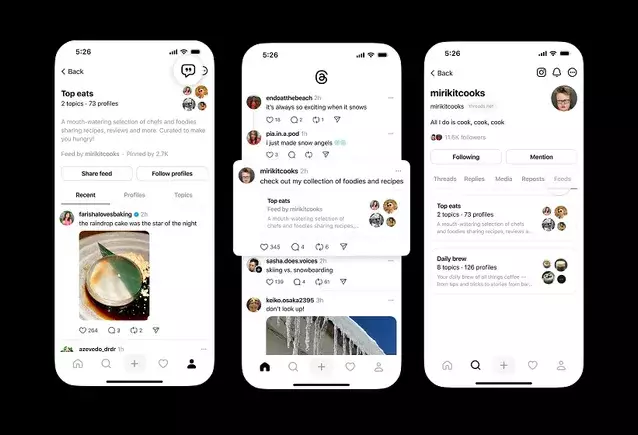In an era of ever-evolving social media dynamics, platforms continually strive to enhance user engagement with innovative features. A recent development that has sparked considerable discussion is Threads’ introduction of custom feed sharing. This feature allows users to re-share curated feeds of posts related to specific topics, reminiscent of Twitter’s former lists functionality. While the enhancement may seem promising on the surface, a closer examination reveals a landscape of potential drawbacks, user attitudes, and the challenge of meeting diverse user expectations in social media functionality.
Threads’ new sharing mechanism enables users to quote and disseminate custom feeds by tapping an icon at the top of the feed visuals. This re-sharing feature not only provides a direct way to promote posts specified by themes but also adds a dedicated feeds tab on user profiles. In theory, this should allow users to connect more effectively with content that resonates with their interests. However, questions arise about practicality and long-term engagement stimulated by this feature.
While the allure of user-generated timelines tailored to niche topics is palpable, does this genuinely address user needs? Regular users tend to prefer straightforward content curation—obviously seeking out profiles that align with their interests. The inclination has shifted towards algorithm-driven content curation, heavily influenced by platforms like TikTok, where users are served tailored content without the necessity of meticulously following specific accounts. In this context, do customized feeds really hold significant relevance for the average user on Threads?
Comparative Analysis with Other Platforms
While Threads is drawing comparisons to Twitter, the comparison also extends to emerging platforms such as Bluesky, where the concept of shared feeds, branded as “Starter Packs,” has gained attention among tech-savvy users. This raises another question: Are these custom feeds merely a gimmick, appealing predominantly to a niche user base, particularly the so-called “power users”?
Interestingly, the very group of power users—those most likely to engage meaningfully with these features—constitute a small fraction of the overall user base across platforms. Research indicates that engagement levels can be dishearteningly low; on platforms including Threads and Bluesky, approximately only one-fifth of users actively produce or share content. The implications of this statistic are profound: while custom feeds may serve as additional tools for the elite few, they do little to generate excitement or sustained engagement among the broader population of users.
The rollout of this custom feed sharing feature has been met with mixed emotions. Some users are enthusiastic about the prospect of discovering and sharing content aligned with their interests, dreaming of a platform experience that emphasizes personalization. On the other hand, there exists a palpable skepticism regarding its applicability and whether it will lead to meaningful interactions or recognition of the content that truly matters to the average user. The question remains whether users genuinely crave yet another way to organize their feeds when algorithmic curations already do a commendable job of fine-tuning their experiences.
Furthermore, as Threads attempts to capture engagement and exploration through these custom feeds, they must also tread carefully not to alienate the average user. In a market hungry for simplicity and instant gratification, complexity and optionality might become counterproductive. The challenge lies in finding the right balance: will the emphasis on custom feeds yield tangible benefits, or will the feature become an overlooked aspect of a platform that continues to prioritize user experience through streamlined design?
The new custom feed sharing feature on Threads serves as an interesting foray into reinvigorating user engagement by facilitating topical content discovery. However, for this mechanism to truly resonate in a landscape dominated by algorithmic feeds, it must transcend niche appeal and establish its relevance among the average social media user. The success of this initiative will ultimately depend on how well Threads can adapt to shifting user expectations while balancing the interests of more engaged, content-driven users with those who prefer simplicity in navigation and interaction. As we move forward, only time will reveal the true impact of these developments on user experience and platform engagement within the competitive social media marketplace.

